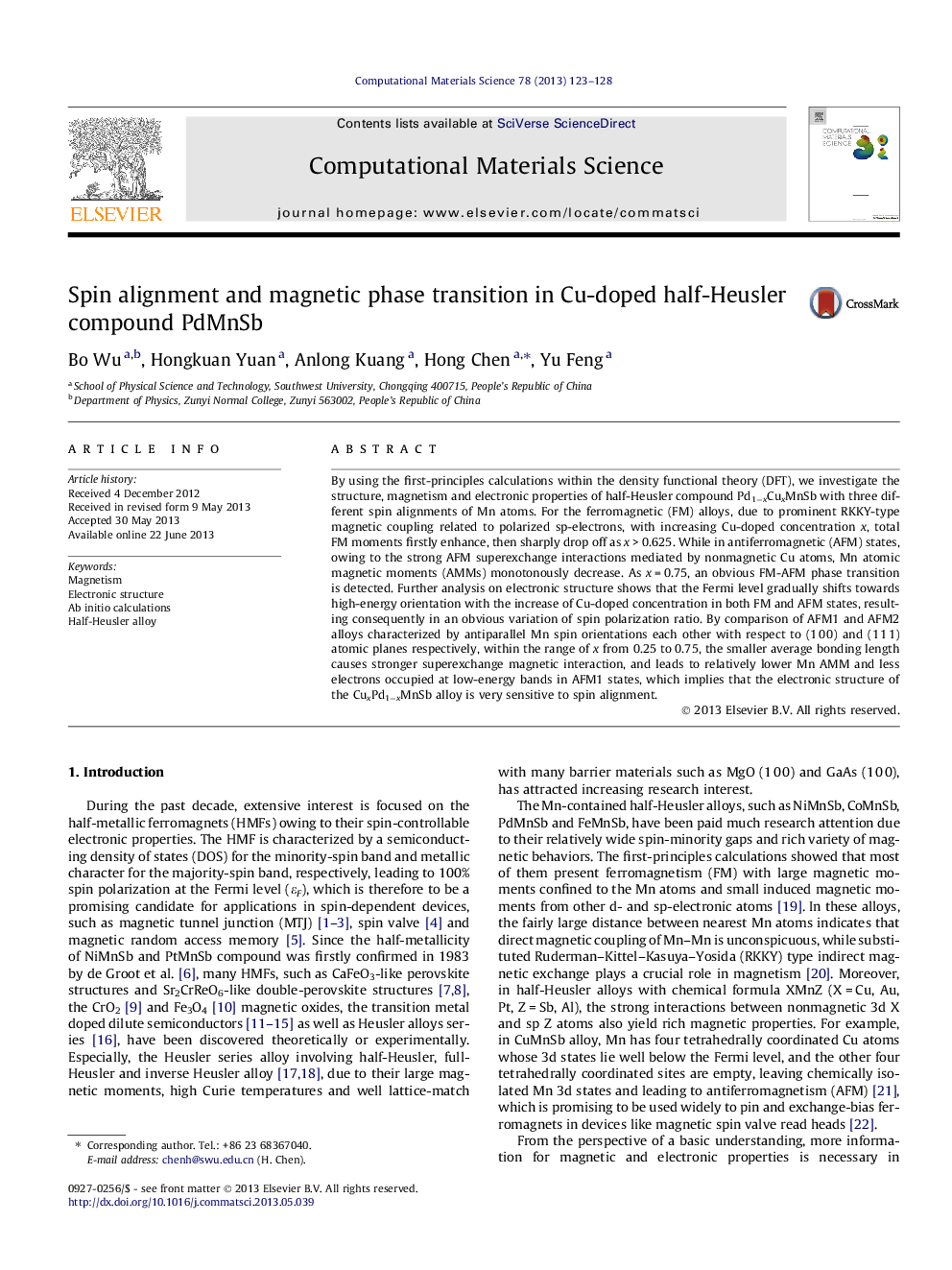| Article ID | Journal | Published Year | Pages | File Type |
|---|---|---|---|---|
| 7961687 | Computational Materials Science | 2013 | 6 Pages |
Abstract
By using the first-principles calculations within the density functional theory (DFT), we investigate the structure, magnetism and electronic properties of half-Heusler compound Pd1âxCuxMnSb with three different spin alignments of Mn atoms. For the ferromagnetic (FM) alloys, due to prominent RKKY-type magnetic coupling related to polarized sp-electrons, with increasing Cu-doped concentration x, total FM moments firstly enhance, then sharply drop off as x > 0.625. While in antiferromagnetic (AFM) states, owing to the strong AFM superexchange interactions mediated by nonmagnetic Cu atoms, Mn atomic magnetic moments (AMMs) monotonously decrease. As x = 0.75, an obvious FM-AFM phase transition is detected. Further analysis on electronic structure shows that the Fermi level gradually shifts towards high-energy orientation with the increase of Cu-doped concentration in both FM and AFM states, resulting consequently in an obvious variation of spin polarization ratio. By comparison of AFM1 and AFM2 alloys characterized by antiparallel Mn spin orientations each other with respect to (1 0 0) and (1 1 1) atomic planes respectively, within the range of x from 0.25 to 0.75, the smaller average bonding length causes stronger superexchange magnetic interaction, and leads to relatively lower Mn AMM and less electrons occupied at low-energy bands in AFM1 states, which implies that the electronic structure of the CuxPd1âxMnSb alloy is very sensitive to spin alignment.
Related Topics
Physical Sciences and Engineering
Engineering
Computational Mechanics
Authors
Bo Wu, Hongkuan Yuan, Anlong Kuang, Hong Chen, Yu Feng,
